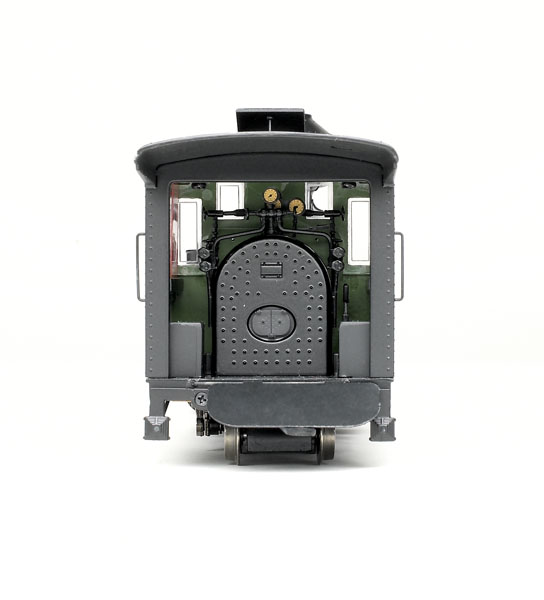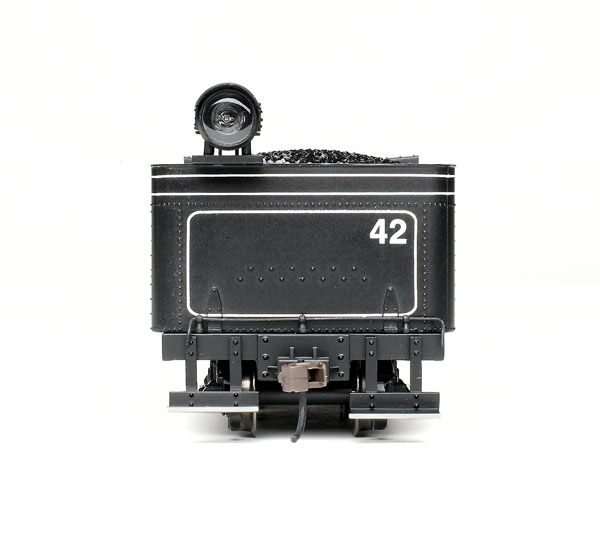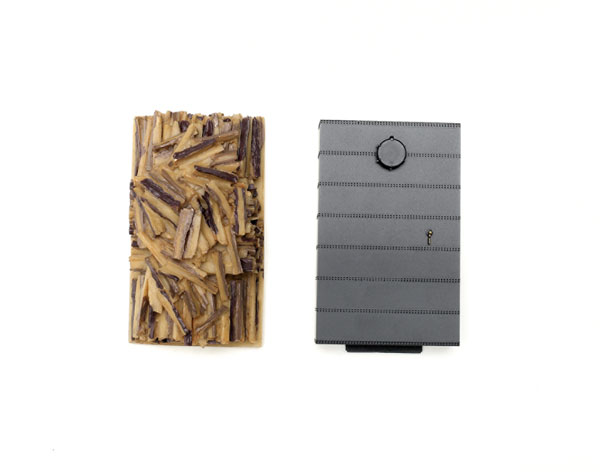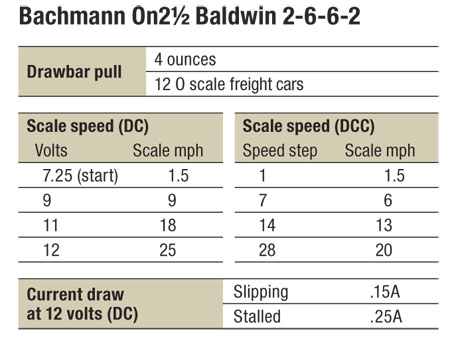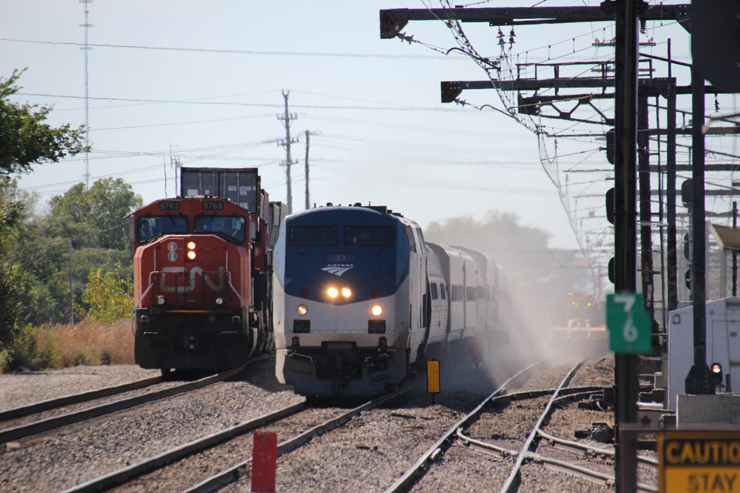Logging Mallets. Many narrow gauge railroads used articulated Mallet steam locomotives. By recycling the exhaust from the high-pressure cylinders on the rear engine to the low-pressure cylinders on the front engine, a Mallet was more fuel efficient than a conventional two-cylinder locomotive. The articulated frame also helped a Mallet locomotive negotiate tight curves.
The Bachmann model is based on a 21/2 foot gauge 2-6-6-2 originally built by the Baldwin Locomotive Works for a narrow gauge line in Santo Domingo (now the Dominican Republic). The major dimensions of the model match prototype drawings in the Railroad Age Gazette Vol. XLV, no. 26 from Nov. 27, 1908.
Details and paint. The locomotive boiler, cab, and tender are made of plastic. Molded detail, including the boiler bands, are well defined.
The interior of the cab features a detailed backhead with separately applied valves and pipes. The walls and ceiling are painted green. All windows have clear plastic glazing. The side cab windows slide open.
Our review sample is decorated for Greenbrier & Big Run Logging Co. no. 42. The black paint has a satin finish, except on the cab roof, which has a matte finish. I couldn’t find any prototype photos of no. 42, but all the lettering and striping on the model are straight and opaque. Baldwin builder’s plates are printed on the sides of the smokebox.
Mechanism. The motor and flywheel are mounted on top of the die-cast metal articulated frame. The rear engine is rigidly attached to the boiler, while the front engine is pivoted at the rear.
A worm at each end of the motor transfers power to the rear axle of each engine. The blackened metal siderods power the other drivers.
A four-pin and two-pin wiring harness connect the electronics in the tender to the locomotive. The DCC decoder is under the coal load, mounted on top of a downward-facing speaker.
I also tested the Mallet with a Model Rectifier Corp. DCC system, and it performed well using 28 or 128 speed steps. I ran the model around an 18″ radius curve and through no. 6 turnouts.
In DC, sound effects include the exhaust, a bell that comes on when the locomotive stops, and a signal of three short whistle blasts when the direction switch is set for reverse. These automatic effects can be turned off, but this requires a DCC system to reprogram configuration variables (CVs).
The decoder has many more programmable features when used with a DCC system. There are nine user-triggered functions, including the bell, a long whistle blast, short whistle blast, boiler blowdown, and a water stop sequence.
The sound of the exhaust varies with the throttle setting and load placed on the locomotive. The chuffs got louder when I increased the throttle or the locomotive headed upgrade. The chuffs become quieter and the clank of the siderods becomes louder when I decreased the throttle or let the locomotive “drift” downgrade.
The decoder has several CVs that let you fine tune the exhaust sound effects. An extensive CD-ROM user manual is included with the model. Following the instructions, I set CV116 to a value of 70, so the chuffs were more synchronized with the motion of the drivers. You can also adjust the throttle and load sensitivity of the exhaust effects as well as the volume limit.
With its smooth mechanism and realistic sound effects, the Bachmann Spectrum On2½ Mallet is a solid choice for narrow gauge fans.
Price: $535
Manufacturer
Bachmann Trains
1400 E. Erie Ave.
Philadelphia, PA 19124
www.bachmanntrains.com
Road names: Greenbrier & Big Run RR, Colorado Mining Co., Midwest Quarry & Mining Co., Pocahontas Lumber Co. Painted and unlettered versions available (all black or
black with red and white trim).
Era: 1908 to 1950s
Features
Bachmann E-Z Mate Mark II operating knuckle couplers at correct height
Dual-mode DCC sound decoder operates on DC and DCC layouts
Electrical pickup on 12 drivers and 8 tender wheels
Five-pole skew-wound can motor with brass flywheel
Minimum radius: 18″
RP-25 contour metal wheels in gauge
Weight: 1 pound 7 ounces
(Engine alone: 1 pound 1 ounce)






